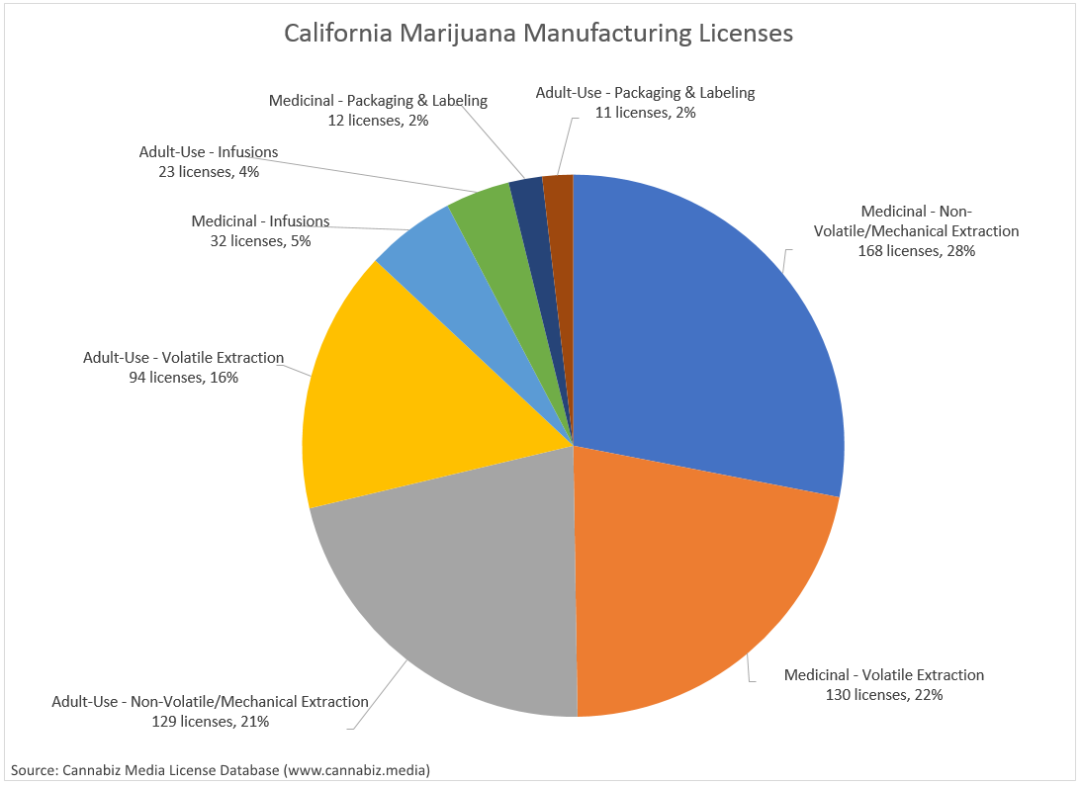Fluence Bioengineering examines the value of narrow band lighting sources and broad spectrum sources using current scientific understandings. Both can have a place in a grow, but may not always be the right fit.

The following is an article produced by a contributing author. Growers Network does not endorse nor evaluate the claims of our contributors, nor do they influence our editorial process. We thank our contributors for their time and effort so we can continue our exclusive Growers Spotlight service.
Disclaimer
This article has been republished with permission from Fluence Bioengineering. The original article may be found here.
Introduction
Horticultural lighting technologies have improved dramatically over the past century, but manipulation of light spectrum is a relatively new concept. Since plants tend to absorb red and blue light most strongly (according to absorption spectra), other wavelengths have been disregarded as unnecessary for plant growth and development. As LED technology has progressed, the ability to provide individual spectra has as well. Pink/purple light fixtures have flooded the horticultural lighting market as a result.
Regardless of this influx of products, research on plant lighting continues to explore the varying interactions that plants have with light and have started to discourage the idea that plants only need two individual spectra for optimal growth. While there is still much disagreement over the primary biological function of light in the 550 nm to 600 nm range as well as in the far-red and ultraviolet (UV) wavebands, research has shown that there are many functions and benefits to incorporating these spectra into a growing space.
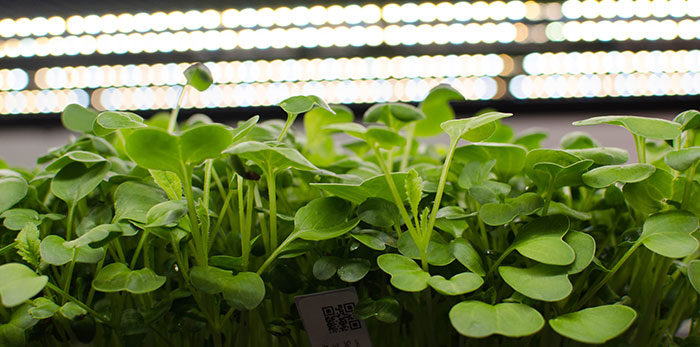
How Plants Use Light
Human and plant light perception use many of the same molecules to detect photons; however, our eyes are more easily fooled than plant photoreceptors. Narrow band red, blue, and green light (RGB), when mixed in the right proportion, are perceived as white light to the human eye. However, plants are quite aware that they are receiving three individual spectra and their growth habits will demonstrate that.
Broad spectrum white light can come in many forms depending on the source. To the human eye, we mostly perceive these different spectra as cooler (blue) or warmer (orange/red) depending on whether the luminar is a metal halide or high-pressure sodium lamp, or in the case of LEDs and fluorescent bulbs, what type of phosphor coating is used. To a plant however, each individual wavelength may promote a different growth habit and photomorphogenic response.
Incoming photons are absorbed by pigments, which absorb light as energy, and photoreceptors, which perceive light as a signal. When absorbed by the most well-studied pigment, chlorophyll, photons can drive photosynthesis and growth. However, chlorophyll, with its wide-ranging absorption spectrum, is not enough to efficiently harvest light by itself. The “antenna complex” is a concept in biology that describes how accessory pigments such as carotenoids can assist both in capturing light that chlorophyll does not absorb, or dissipating excess light as heat (non-photochemical quenching) when photosynthetic reaction centers are overloaded with incoming energy.
Accessory pigments are primarily carotenoids such as beta-carotene, lutein, zeaxanthin, antheraxanthin, and violaxanthin. These pigments are yellow to orange in color and absorb light most strongly in the range of 450 nm to 550 nm. Some of these pigments change forms based on lighting conditions through processes called epoxidation and de-epoxidation. If radiant exposure is too high, damage can occur to the photosynthetic apparatus, so it is important for a plant to be able to deal with this incoming energy. Under pure sunlight where radiant exposure may fluctuate throughout the day, the antenna complex adjusts to accept or dissipate light:
- When radiant exposure is low, violaxanthin will capture photons and transfer this energy to chlorophyll, improving efficiency of light absorption.
- When radiant exposure is high, violaxanthin is de-epoxidated (converted) into zeaxanthin which then dissipates excess photons as heat.
Beta-carotene functions similarly to violaxanthin and lutein functions like zeaxanthin but without the interconversion process called the “Xanthophyll Cycle.” The flow of energy between pigments occurs spontaneously as they are “excited” by light particles. Interestingly, carotenoids that protect plants from light and improve their ability to capture light can also serve similar functions within the eyes of many animal species. There are several other plant pigments unassociated with the photosynthetic light-harvesting complex including anthocyanin and lycopene. Though these compounds do absorb light, their main function is to protect cells and DNA from damaging UV radiation as well as scavenge “free radicals” such as hydrogen peroxide, preventing further cellular damage.
Editor’s Note: These molecules that protect plants from high light levels are typically dark, resulting in the deep purple or deep reds observed in some plants. Red lettuce is a great example of this.
Photoreceptors, in most cases, are proteins that are paired with a “chromophore” that absorbs certain wavelengths of light and then send a signal to the plant, ultimately influencing photomorphogenesis. There are several different types of photoreceptors and their light absorption ranges overlap:
- Cryptochromes use light in the range of 300 nm to 500 nm though it most strongly absorbs at 350 nm (UV-A) and 450 nm (blue). This receptor, when it is excited by light, prevents elongation of hypocotyls (main stem of seedlings) and even mediates flowering and photoperiod in some species.
- Phototropins are blue/UV-A absorbing photoreceptors but with a much stronger absorption peak at 450 nm and are thought to regulate phototropism (process in which plants move in response to light), stomatal aperture (opening and closing of stomatal pores), movement of chloroplasts (photosynthetic organelles containing chlorophyll) within leaf cells, and the inhibition of leaf expansion.
- Phytochromes are some of the more famous photoreceptors because they can strongly influence flowering. It is a little known fact that phytochromes actually absorb light in the range of 300 nm to 800 nm. Most of the known functions however, are a result of the absorption peaks at 660 nm in the Pr form and 730 nm in the Pfr form.
Phytochromes are constantly changing form and reach a “photoequilibrium” that is regulated by spectral ratio and PPFD present in the growing environment. Depending on the photoequilibrium of phytochrome, different signals may be sent down different metabolic pathways within the plant. These signals can regulate many processes including germination, seedling establishment, stem elongation, leaf expansion, and of course flowering and photoperiod. Different ratios of R:FR (red to far red) light received by a plant will dictate how the plant develops in terms of compactness, flower size, flower number, etc. There are several other newly discovered and under-researched photoreceptors (UV-B receptor correlated with anthocyanin accumulation) but we will not discuss those in this article.
Since there is significant overlap in the absorption spectra of these photoreceptors, most photomorphogenic responses are co-regulated. Some responses may be turned on and off by one receptor, but the expression of that response can be amplified by another receptor. The enigmatic “circadian clock” (or circadian rhythm) that regulates so many functions within plants is the culmination of activity from multiple photoreceptors based on photoperiod, light spectrum, and PPFD. This rhythm of growth patterns within a plant strongly influences photomorphogenic outcomes; however, just like photosynthesis, there is an action spectrum for all photomorphogenic responses dictated by a mixture of signals from these photoreceptors and does not necessarily mirror the absorption spectrum.

Supplementing Specific Wavelengths Vs Broad Spectrum
When considering whether or not to use narrow band lighting, there are two primary considerations to ponder:
- Whether or not your plants are already exposed to broad spectrum light (solar for greenhouses, or a broad-spectrum fixture for sole-source lighting applications)
- What crops you are growing.
When plants are already exposed to broad spectrum lighting from a sole-source fixture, it makes sense to supplement with narrow band lighting only if there is a desired photomorphogenic effect that your crop can’t achieve without being exposed to a specific waveband. However, if you are growing under solar radiation and a high DLI, your crop may not be as responsive to changes in light spectrum, as solar radiation is quite broad already and may drown out the photomorphogenic benefits of narrow band lighting.
Another aspect to consider when growing under solar radiation is whether or not you need to increase your DLI. If you supplement with a narrow-band fixture as a method of increasing DLI, you may see inconsistencies in product quality as solar radiation increases and decreases throughout the year, exposing your crops to differing amounts of sunlight and narrow band light. If your DLI is constant and you only wish to induce a photomorphogenic response such as coloring, compactness, or rooting, it may make sense for you to supplement more blue light. However, DLI often has more of an impact on desired traits than spectrum. If you are growing a flowering/fruiting crop (like cannabis) and wish to encourage more flower/fruit growth (with a sufficient DLI and photoperiod) it may be beneficial to supplement more red light, as 660 nm light encourages phytochrome responses in many species, which sends signals throughout the plant to encourage reproductive growth.
Conclusion
Narrow band lighting can provide acceptable growth for many species, so long as there are no significant fluctuations in DLI independent of the portion supplied by the light fixture. However, plants use a variety of different photoreceptors and pigments that cooperatively regulate growth and development. Plants developed these photomorphogenic responses under broad spectrum light and it is very rare for a certain species to express a response to narrow band lighting that cannot also be achieved by broad spectrum lighting given sufficient DLI. For consistent product quality, broad spectrum fixtures are a safer choice. Different species can have varying responses to changes in light spectrum. Research is constantly ongoing that is attempting understand how individual crops respond to different light spectra, and in some cases there is clear evidence about what type of lighting is best for a crop. If you are uncertain about the response your crop may have, supplementing with broad spectrum light has a proven track record of improving crop quality, consistency, and yield.
10 Best Gift Ideas for Cannabis Connoisseurs and Growing Aficionados (2022)
December 7, 2022Developing and Optimizing a Cannabis Cultivation System
December 14, 2021Dealing with Insomnia: How Can CBD Help?
December 10, 2020Your Guide to Sleep and CBD
December 7, 2020
Do you want to receive the next Grower's Spotlight as soon as it's available? Sign up below!
Resources:
Want to get in touch with Fluence? They can be reached via the following methods:
- Website: https://fluence.science/
- Email: info@fluencebioengineering.com
- Phone: 512-212-4544

Do you have any questions or comments?

About the Author
Fluence Bioengineering LED-based lighting systems are designed to provide high levels of photosynthetically active radiation (PAR) ideal for commercial cultivation and research applications from microgreens to cannabis. From sole-source indoor grow lighting to supplemental greenhouse lighting, we custom tailor our light spectrum and form-factors to optimize plant growth and increase yields while consuming less energy and reducing operating costs versus legacy technologies.













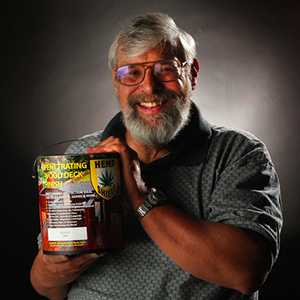

 Colin Bell
Colin Bell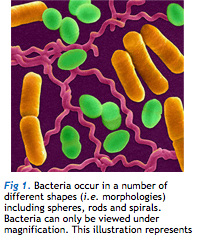
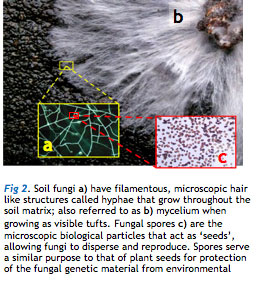
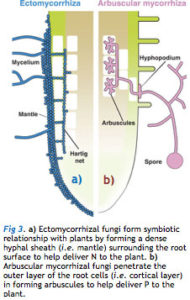


 Any industry, including the stock photos industry!
Any industry, including the stock photos industry! The youngins' love stock photos.
The youngins' love stock photos. I will get 4/20 off!
I will get 4/20 off!







